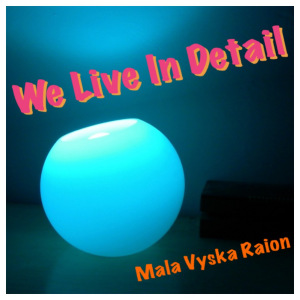September 25th, 2013. The day that I understood the subtext of Ds106.
What we do as assignments shift our frames of reference and can change how we relate to the everyday. I do this through meditation and writing and now I am learning to do it through other channels. What a joy!
Settle down with a cup of tea, as I want to tell you a story that explains what I mean.
It all started as a normal work day – I was travelling into London to run a class on cognitive linguistics and its use in business communication. I had planned to prepare on the train so I had my papers and my iPhone with me. As I got on the train, I remembered the PhotoBlitz assignment. I had to prepare for class but who does not have 15 minutes in a day to take a few pictures? I decided to do it from memory and on the train – it did not bode well as far as quality output is concerned. Still…
I had just read a fabulous tutorial on Camera+ which I had decided to use as my only camera this week, and I had that with me. I had just learnt how to take a screenshot of iPhone – so time stamp was easy.
I ignored my internal dialogue as it kept saying there was not point and there was no time to create anything decent. I just got on an did the work.
Here is a short Puppet on the raw output – but that was the least interesting thing about the assignment for me.
As the train came into London Victoria and I was running a little late I decided to take a cab to the venue. London cab drivers are always a joy to chat with and I always make time to engage them in conversation rather than get lost in my digital echo chamber. This one did not disappoint. I found myself remembering audio week and wondering if there was an app that would allow me to record the sounds of London – it was such an wonderful conversation. What was of note for me was that I was noticing the sounds in a new way.
I found myself telling the cabbie (this is how we affectionately refer to taxi drivers in London) about DS106 and within minutes I was in a new dimension. I told him about the assignment, he loved photography and it tickled his creative bone. Here how he would have done it:
- You could do 15 minutes through London. There is the London Eye, Parliament, National Gallery, a post box, that woman on the bicycle. You need to get things from funny angles.
- You could stand by the traffic lights and get photos of people as they approach the lights. You know catch the different emotions. Some just miss the lights and get angry, others are patient, others smile. In 15 minutes you could do capture really interesting faces. these day, though, you might have to ask permission. We have to ask permission for everything, annoying though it is.
- Controversially, you could find the local fire station and spend 15 minutes photographing the picket line. yes, firemen are on strike all day today. That would make a great 15 minutes.
Am I the first to have recruited a cabbie to DS106?
As we talked I kept getting more and more excited by the amazing possibilities of what had seemed just a chore to be done 30 minutes before. We talked about how photography is about looking at your day to day in new ways not about turning it into a chore that requires extra time. You can always find amazing perspectives if you look, he said. We arrived at the venue, I wanted to stay in the cab and go on a photo-blitz with my cabbie rather than go in and teach.
It did not end there. My class was different, I noticed that when I teach I am the medium for the ‘stories’ I tell. I paid less attention to content, hell I know the content by now, and more attention to how I talked about the content. Variation in my own voice, presence, engagement in the moment. Use of my visuals as more than decoration on a slide, but a way to convey more stories. I had fun and (I think) so did the students.
On the cab back to the station, another great conversation but this time in contrast to the first one. I also wished I could record and make an audio story. This cabbie was no techie. He had broadband only for film streaming on a TV and a computer that lived in the cupboard under the stairs because ‘his friends were around the corner, not on Facebook’.
I got on the train back home, with a new perspective of what it is I am learning on DS106. Life as improvisation, composing a life through the stories we tell in each conversation we have. So I decided to experiment with the editing functions on Camera+ on the way back home.

I remembered one of the suggestions on the weekly tasks was to make a photo look like not-a-photo. I picked the most boring photo from my blitz earlier and ended up with photo above. It will not be snapped up for the next national exhibition any time soon, but it taught me something. I learnt to use some of the effects on Camera+, I learnt to look at a photo I might have deleted differently, a little about light, I finally get what aperture means and what it does….but most importantly, the internal dialogue had ceased. I was in the flow of the activity with a quiet mind. Meditation by any other name.
A perfect day out in London with DS106.

















